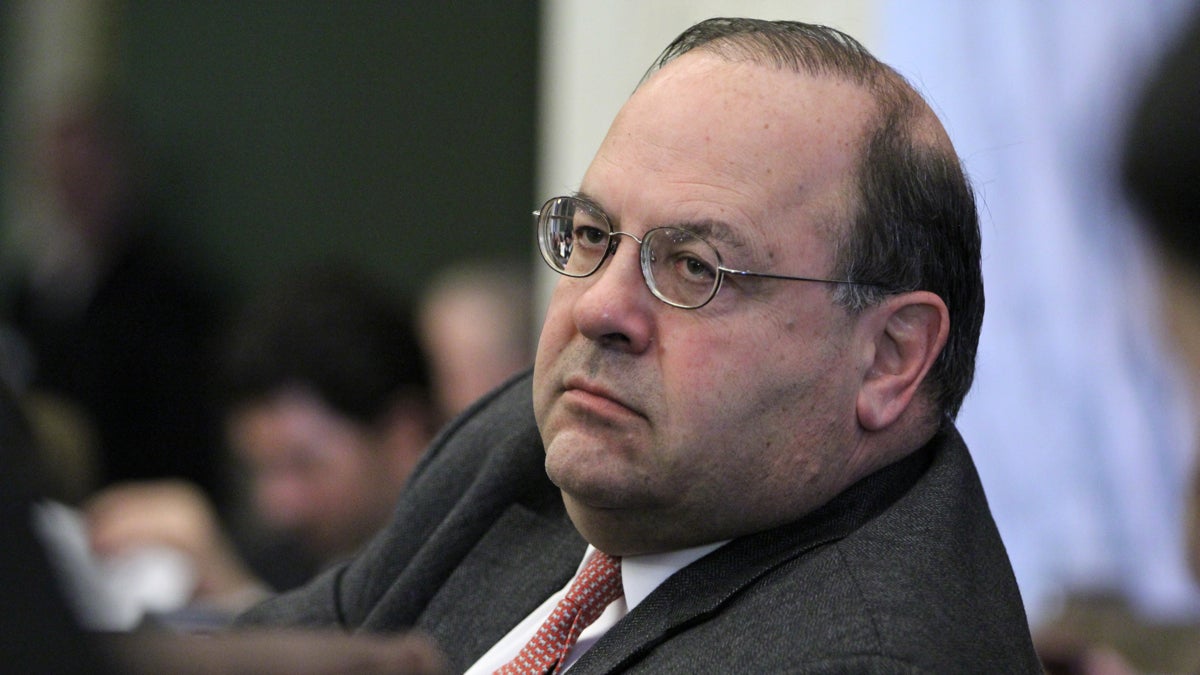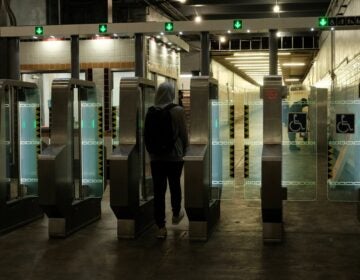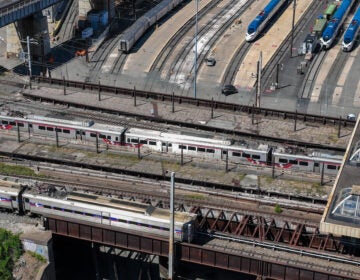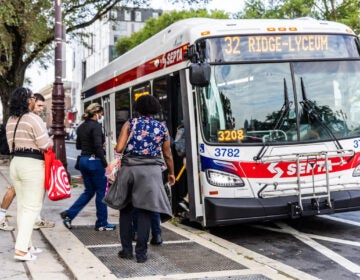Councilman Domb’s modest proposal: ban on-street parking in Center City
“I think that we should — my opinion, just my opinion — we should look at certain streets in Center City and suspend on-street parking,” Domb said at Wednesday’s hearing.

Philadelphia City Councilman Allan Domb. (Emma Lee/WHYY)
At a City Council hearing on SEPTA’s budget, Councilman Allan Domb floated a bold proposal that will make him a hero to some and a villain to others in the ongoing saga over how to share Philly’s streets: Banning on-street parking on some Center City streets.
“I think that we should — my opinion, just my opinion — we should look at certain streets in Center City and suspend on-street parking,” Domb said at Wednesday’s hearing. “Get rid of it.”
Domb pointed to increasing demands on the city’s inelastic supply of streetscape to support his parking ban suggestion. “When you look at what’s going on in Philadelphia in general, with Uber and Lyft, 25 percent of our purchases over the internet — all the delivery trucks — nine percent of our food purchases are now being delivered [and] expected to go to 18 percent in the next three years… the congestion is just going to get worse.”
The city’s Office of Transportation and Infrastructure Systems (OTIS) is about to launch a planning effort focusing on city traffic and road safety. Domb urged OTIS Managing Director Mike Carroll to include a study of suspending on-street parking on certain Center City streets in the plan.
Domb directed his comments mostly at Carroll, who attended the hearing because his office works closely with SEPTA. “I know we talked about this, Mike,” Domb said. “I just want to make sure this is front and center, because its a complaint from everyone right now.”
“We need a study that shows: If we suspend certain streets of on-street parking and those cars go into certain lots, [then] will the revenue be similar?” Domb said, noting that the city taxes privately owned parking lots at 22.5 percent. “It might actually be better for us than what we’re doing now, and it’ll dramatically free up traffic flow.”
Carroll said he would work with the Councilman on the issue.
The idea is politically radical in a city where concerns over parking have recently derailed efforts to build bike lanes, killed a program supporting electric vehicle ownership, and frustrated numerous development proposals. Council President Darrell Clarke has repeatedly questioned city policies that reduced the mandatory minimum amount of parking spots developers must provide in new construction, and called for raising it. Other council members who represent areas of the city where finding a free on-street spot can be difficult have echoed his concerns.
But the idea has its fans, who agree with Domb that it would free up space on the city’s most congested roads.
“I pretty much agree with Councilman Domb: The congestion has gotten very bad,” said Dick Voith, President of Econsult Solutions, Inc.
Voith said that Philadelphia should consider replacing some of the parking lanes with pick up/drop off zones for deliveries, taxis, and ride-sharing, rather than more travel lanes.
“I also think that people using them should pay for them, just like parkers have pay for them, and they should pay for them handsomely,” said Voith. At a recent transportation planning conference in Philadelphia, a UPS representative said his company would gladly pay for delivery permits.
Voith cautioned that simply suspending on-street parking wouldn’t be enough — the ban would need to be strenuously enforced.
“All of that is absolutely worthless unless there is improved enforcement of the traffic rules, traffic regulations, market regulations, don’t block the box regulations, and that kind of thing. Otherwise, behavior won’t change.”
That would require the Philadelphia Parking Authority’s support. PPA Executive Director Scott Petri sounded open to the idea on Wednesday.
“The City has convened a working group to research, analyze and recommend action items to address Center City congestion,” said Petri in a written comment. “The PPA is part of that group, and we will work with the other team members to explore all options to address congestion while improving access to and within Center City for all transportation forms.”
In an e-mail, Center City District President Paul Levy struck a cautiously open-minded note.
“The idea of banning on-street parking in some places might make sense, but we should avoid doing things in a piecemeal or impulsive fashion,” said Levy. “We have to balance transit, pedestrians, truck deliveries, motorists, ride-sharing, and bicyclists. The Streets Department, SEPTA, the Parking Authority and CCD are committed to working cooperatively and quickly on coming up with a comprehensive plan to reduce congestion in Center City.”
A recent report from the Center City District found that between 2013 and 2017, car travel times on Chestnut, Walnut and Sansom Streets from Broad to 23rd Streets increased between 10 and 20 percent, and bus travel times jumped between 25 and 40 percent. The report pointed to a number of contributing factors, including more pedestrians (who block turning traffic), increased deliveries, increased construction (which can block lanes for months on end), and increased traffic from ride-sharing.
Philadelphia’s urbanist community quickly applauded Domb’s idea.
“In Center City, on-street parking is the lowest and worst use of limited street space, and we would almost always be better off using it for moving people rather than parking cars,” said Dena Driscoll, co-chair of the urbanist PAC 5th Square. “That said, any space taken back from cars should be dedicated to space-efficient ways of getting people around like buses or bikes, not extra car lanes.”
On-street parking is considered a birthright in some parts of the city. While Domb’s idea of requiring drivers to park in a lot or garage is not original, it is foreign: Japan, uniquely, effectively bans the practice by requiring city residents to purchase a parking space before they can buy a car.
Domb offered his proposal after asking SEPTA General Manager Jeff Knueppel about the transit agency’s plans to improve service on the Market-Frankford Line, saying that the city should encourage more development along the elevated heavy rail line. “The more we can develop around the El stops and make those stops even more attractive, it’ll help all the neighborhoods, because that is the best way to really get around the city,” Domb said.
Knueppel agreed and noted that the agency is looking to expand the platforms at Market Frankford stations to accommodate longer eight-car trains.
WHYY is your source for fact-based, in-depth journalism and information. As a nonprofit organization, we rely on financial support from readers like you. Please give today.






